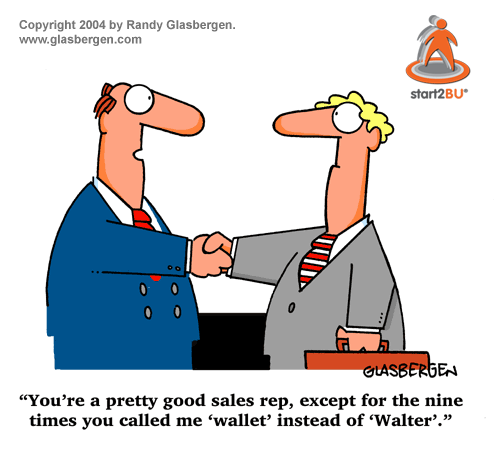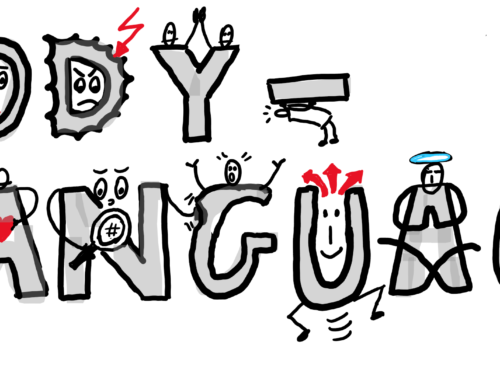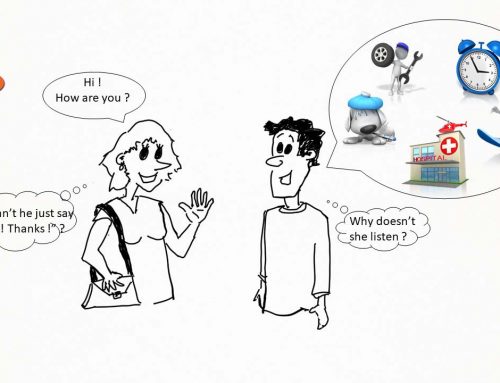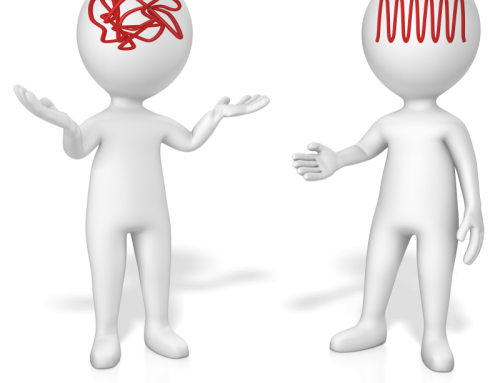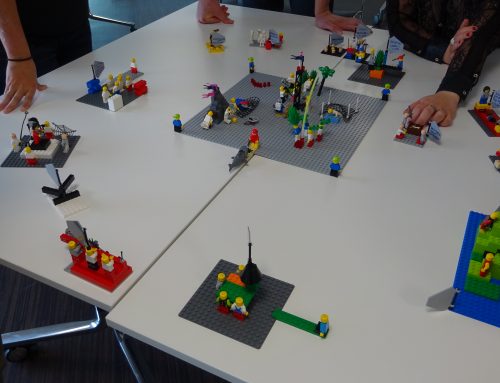Where does communication usually go wrong ? At the start, midway or towards the end ?
“Well begun is half done” is an old saying and a “truism”.
In building a good relationship those very first moments, the first impression is crucial for its success. Contact is essential to bring on optimum communication. Something going wrong in this phase is a real chance the communication and therefore the relationship will gradually fade out.
Whether it’s a business relationship or a personal relationship is not so important. What matters is that we are humans and social relationships are simply part of our basic needs (Maslow’s pyramid). One person values relationships more than the other.
Contact is the very first step in a good relationship.
It’s the recognition of the other as a human being on a first healthy acquaintance. The non-verbal communication is just as important – if not even more – as what you say.
What can you do to establish better relationships at the Contact stage ?
- Say hi or hello
Let people know that you see them. ‘To say hello rightly is to see the other person, to be aware of him as a phenomenon’ (1). I recognise you as a human being. And to do this there’s no need to know the other in person or continue any communication whatsoever.
Do you say hello to everyone at work regardless of their position ?
- Make eye contact
It cannot be stressed enough how important making eye contact is to gain someone’s trust. At the same time it gives you the opportunity to read the other (emotionally) .
- Remember names and address people by their names
How nice is it when someone remembers your name after not having seen each other for a while ? Suddenly you think, wow, this person considers me important remembering my name.
Do you find it difficult to remember names ? “Concentrate when someone presents himself to you ; don’t let your thoughts wander when he says his name. Repeat his name in mind, then call him by his name while you shake hands.” (2)
Another tool is to pair in mind a characteristic of the person with the first letter of his name, such as ‘witty Walter or Wendy’.
- Pronounce a person’s name correctly
Pronouncing people’s names wrongly can be pretty irritating. It is a form of respect for the other. Can you really not pronounce his name correctly, then be open and honest about this to the other. This creates mutual understanding.
- Start the conversation with small talk or chit-chat
To most people it is pretty daunting to get to the heart of the matter immediately or to cut straight to the point. It may comes accross as impersonal or pushy. Obviously there are (impatient or busy) people who prefer this approach and it will be readily apparent to the response you get.
Still, it never hurts to say something about the traffic, the weather or the premises of the person you meet… It allows you to find out how people connect with you. Is the invitation to ‘small talk’ accepted ? Then you are on the right wavelength and you can bring the relationship gradually to a higher level.
It is similar to taking a swim in a lake you have never been in before. First you go for a paddle, you feel what the bottom of the lake is like – scan depth – before swimming or plunging in.
The small talk in business meetings usually starts with ‘coffee, tea or something fresh ?’
When the invitation to small talk is not accepted you will have to look for other common ground if you wish so. Searching for a new wavelength with better reception.
- Find common ground
It is worthwile to explore this in order to intensify the trust in your relationships. Oddly enough the smallest things can enhance trust between people. You could be wearing the same colours, it could be a piece of art you both admire, discovering a common interest, having children of the same age, etc. At such a moment a magical connection takes place, an invisible string connects you.
By putting these recommendations for Contact into practice, you are ‘half done’ as the expression goes.
Do you want to know more about leadership, communication and authenticity?
Yes please, send me free leadership tips.
Yes please, I would like to know more about Start2BU-workshops.
When using the word “he/his” it refers to both male and female.
Sources : (1) What do you say after you say hello, Eric Berne (2) Approaches to psychology, Glassman & Geluk

